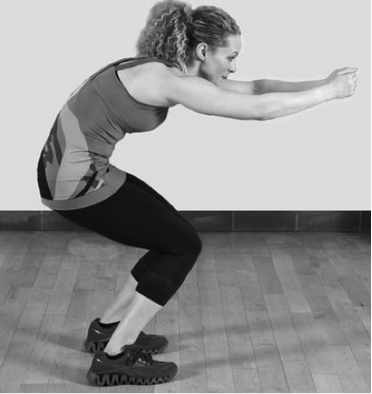In my last post I talked about the importance of recovering well. If you have not read that post yet, you can check it out, here. Today I want to address the second secret to elite performance: the importance of moving well.
Moving well is all about efficiency. Whether you're a runner, swimmer, soccer player, or a gymnast, the better you move, the more efficient you are. In sports where the objective is to be the fastest, this can mean the difference between finishing in 1st place or 3rd place. So, what does moving well look like?
Look at these two athletes. Which one do you think “moves well”? If you said the one on the left, you would be correct. But can you tell me why the athlete on the right does not? We can all guess, but one frame does not tell you about the whole movie.
This leads to my next point. Moving well can be broken down into two parts: the mobility that we have and the mobility that we can use.
The mobility that we have is called range of motion. Range of motion is a measure of how much movement is possible at each joint, e.g. knee, shoulder, elbow, etc. For a visual, think about how much motion a swimmer is going to have at their shoulder vs. someone with arthritis. This can be limited because of injury, surgery, short muscle length (e.g. hip flexors) or a slew of other factors. If someone has an issue with range of motion, they can work to improve theirs. This is where stretching, manual therapy, manipulations, dry needling, etc. are appropriate. But, what happens when there is plenty of range of motion but the athlete is still limited? This is an issue of the mobility we can use.
The mobility that we can use is a concept that is not so obvious. Do you remember when you were a kid and your parents would tell you not to use a calculator for simple math because you would lose that skill? They would say “if you don’t use it, you lose it”. As hard as it may be to hear, they were right, and that concept doesn’t just apply to math, it also applies to movement. Just because someone has a lot of range of motion does not mean they have the ability to use it, or, more importantly, control all of it. If you have the available shoulder range of the person in Figure 3a (180 deg) but you only use the amount of the person in Figure 3b (90 deg), you will lose the ability to control the shoulder at the upper ranges. This scenario tends to lead to injury because you are taking your body to a place it rarely goes and it's not comfortable with. Think of it like this, if I'm a runner and I have the genetic capability to run 30 miles, but I usually only run 15 miles. What do you think is going to happen when all of a sudden, I attempt to run 25 miles? Here's a hint: nothing good.
Figure 3a.
Figure 3b.
So how do you move well? By practicing good form with exercises and going through full ranges of motion. This will help you reinforce good movement and gain control through all ranges of motion. Never push through ranges that are not available to you. Your body will naturally give you more motion when it feels you are able to control it. While stretching can help, particularly after surgery when joints are stiff, strength training through full range of motion will give you more bang for your buck in the long run. Strength training in this way will help you improve the mobility that you have and the mobility you can use, while at the same time making your stronger in these movements. Once you have done that, follow the words of well-known Physical Therapist, Gray Cook, “Move well. Move often”. And your parents, "If you don’t use it, you will lose it."
Not sure if you move well? Get screened by a Physical Therapist and have them give you tips on how to improve where you are at.









